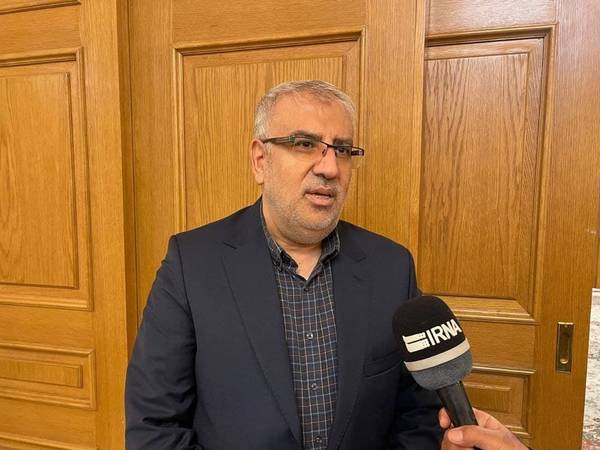Iran increased oil revenues 40 percent in past 12 months and injected 10 percent above the budget forecast into government coffers, the oil minister has said.
In a two-part interview published by official government new website, IRNA, on Tuesday and Wednesday (April 5, 6), Javad Owji presented a rosy picture of oil ministry accomplishments since he was appointed minister last August.
Although refusing to say who were Iran’s oil customers or details about export volumes and destination, Owji said that in the Iranian year 1400 that ended March 20, forty percent more crude and other hydrocarbon fuels were exported than in the previous year.
Roughly six months of this period fell into the presidential term of Hassan Rouhani and his oil minister Bijan Zanganeh, and six months was managed by Owji under Ebrahim Raisi’s presidency.
It is not fully clear from the interview how much of the additional exports were managed by the previous administration and what was the impact of “the jihadi management” Owji attributed to the new administration. But independent news reports have indicated a boost in recent months.
Based on multiple reports by industry sources and foreign news agencies throughout 2021, it was clear that Iran’s oil exports had substantially increased from a low of 200,000 barrels per day in 2019 to around 750,000 barrels in early 2021.
Owji explained that the government budget for the year 1400 assumed a revenue of $17,355 billion from all hydrocarbon exports. Based on law, the oil ministry receives 14.5 percent of this amount to reinvest in the sector while 20 percent is saved in the National Development Fund. The remaining 65.5 percent goes into the government’s operating budget. Owji said that because of higher exports, instead of $11,368 billion going to the government, it received 10 percent more.
Owji then stated that the government received 10 percent more from hydrocarbon exports than forecast in the budget. The budget was based on export of one million barrels of crude a day. The question here is that if 40 percent more was exported, why the government’s actual share increased only by 10 percent.
The explanation might lie in the one million barrel per day export volume set in the budget in early 2021, when Iran was probably exporting less, around 700,000 barrels. This volume might have increased later to above one million, with the government eventually receiving 10 percent more for the full year, and not 40 percent.
Owji’s remarks do seem to show that Iran’s illicit oil exports might have received a further boost in the closing months of 2021 and early 2022. China being the main destination, there were reports in the fall that Beijing was building up reserves, especially in December, by around 900,000 bpd, after months of small additions.
Expectations were that China would slow down the stockpiling of oil in early 2022, but by the end of February as prices soared, Beijing reportedly ignored United States calls for a coordinated oil release and instead kept building up its reserves.
To put Owji’s numbers in context, without US sanctions and full-capacity exports, Iran’s total annual oil revenue should top $60 billion, while it was under $20 billion in the past 12 months. With oil at above $100 a barrel since the Russian invasion of Ukraine, which was not the case in the past 12 months, revenues are certainly higher now, but would hardly reach even half of what it could be if sanctions were lifted.
Given the lost revenues since 2018 when sanctions began, the additional oil income since early 2021 helps Iran but is insufficient to make bring about a major improvement in its finances when the government owes tens of billions of dollars to domestic banks and creditors.
